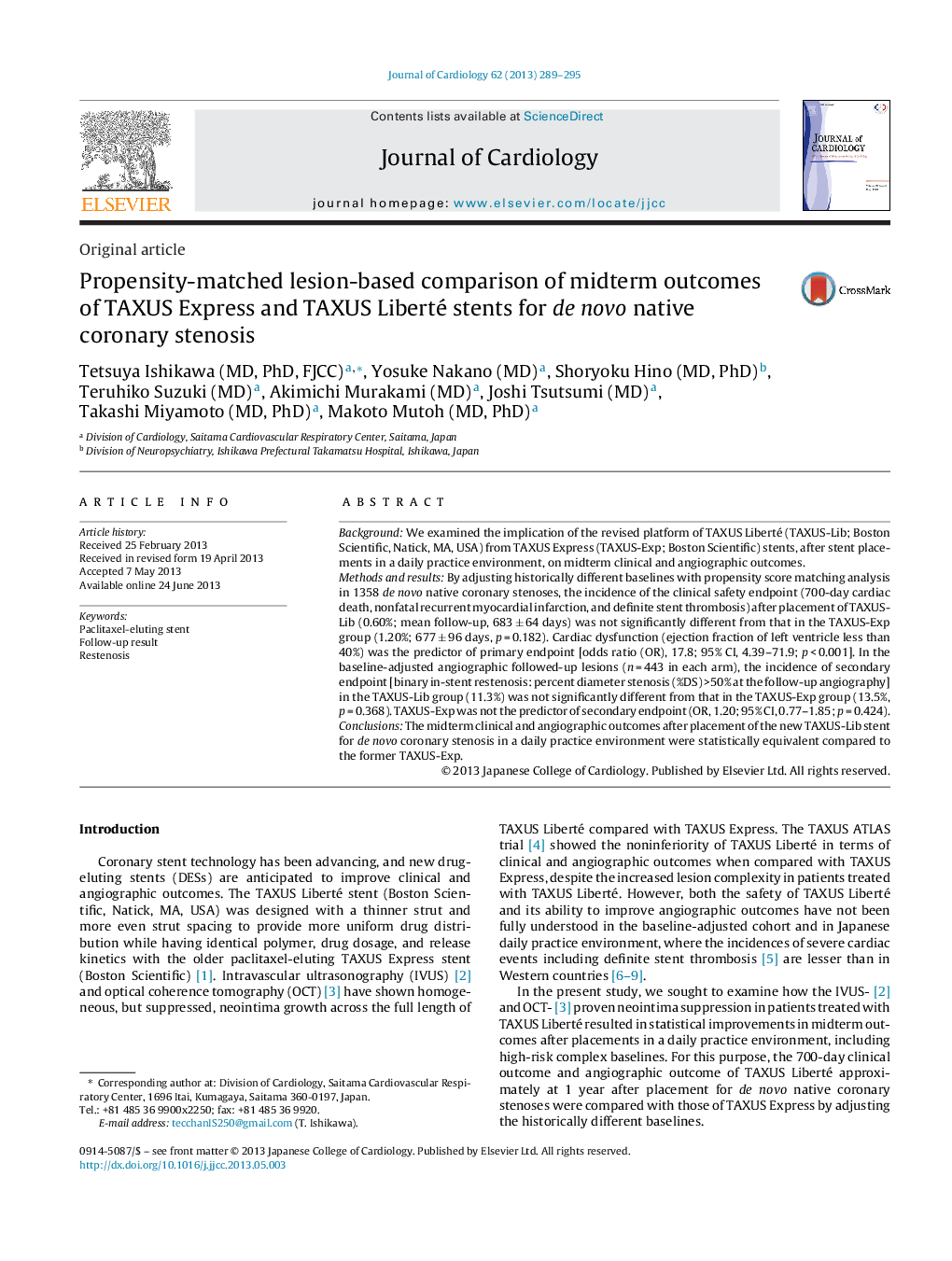| Article ID | Journal | Published Year | Pages | File Type |
|---|---|---|---|---|
| 5984147 | Journal of Cardiology | 2013 | 7 Pages |
BackgroundWe examined the implication of the revised platform of TAXUS Liberté (TAXUS-Lib; Boston Scientific, Natick, MA, USA) from TAXUS Express (TAXUS-Exp; Boston Scientific) stents, after stent placements in a daily practice environment, on midterm clinical and angiographic outcomes.Methods and resultsBy adjusting historically different baselines with propensity score matching analysis in 1358 de novo native coronary stenoses, the incidence of the clinical safety endpoint (700-day cardiac death, nonfatal recurrent myocardial infarction, and definite stent thrombosis) after placement of TAXUS-Lib (0.60%; mean follow-up, 683 ± 64 days) was not significantly different from that in the TAXUS-Exp group (1.20%; 677 ± 96 days, p = 0.182). Cardiac dysfunction (ejection fraction of left ventricle less than 40%) was the predictor of primary endpoint [odds ratio (OR), 17.8; 95% CI, 4.39-71.9; p < 0.001]. In the baseline-adjusted angiographic followed-up lesions (n = 443 in each arm), the incidence of secondary endpoint [binary in-stent restenosis: percent diameter stenosis (%DS) >50% at the follow-up angiography] in the TAXUS-Lib group (11.3%) was not significantly different from that in the TAXUS-Exp group (13.5%, p = 0.368). TAXUS-Exp was not the predictor of secondary endpoint (OR, 1.20; 95% CI, 0.77-1.85; p = 0.424).ConclusionsThe midterm clinical and angiographic outcomes after placement of the new TAXUS-Lib stent for de novo coronary stenosis in a daily practice environment were statistically equivalent compared to the former TAXUS-Exp.
